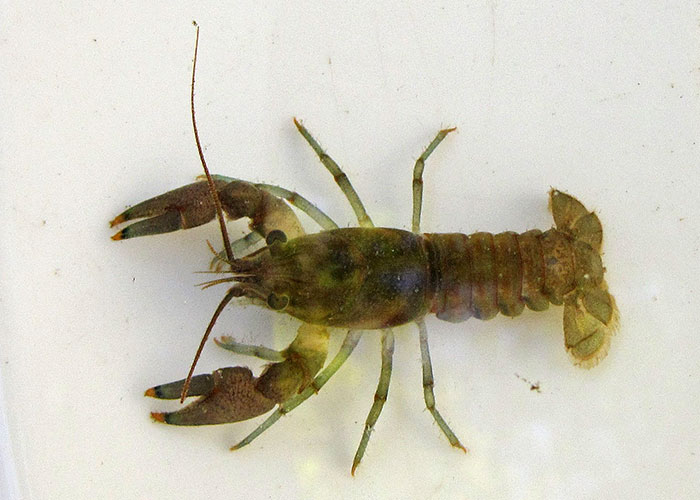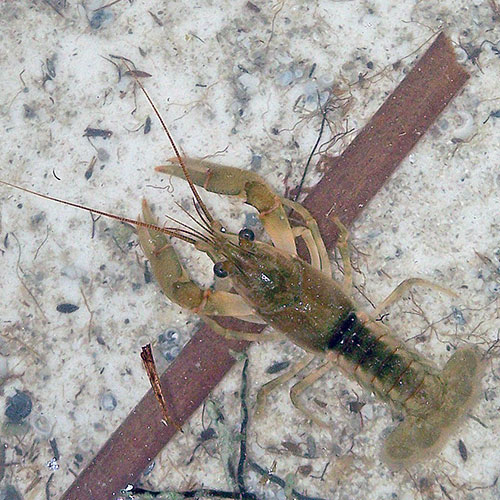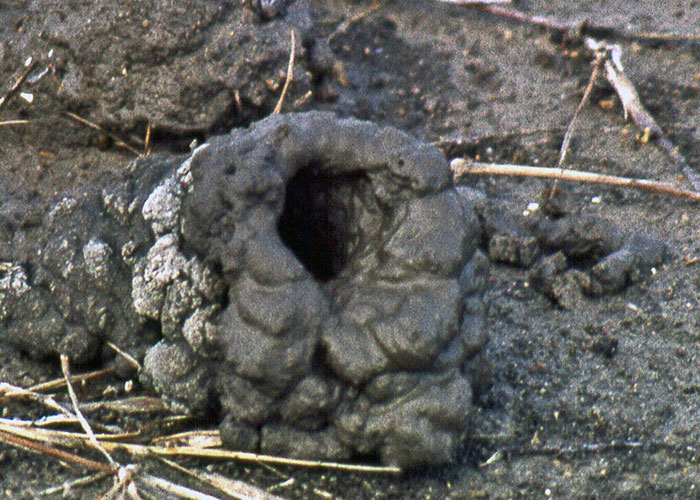Hi, again, BugFans,
Crayfish
Crayfish are classified in the phylum Arthropoda (jointed legs), the class Crustacea (referring to their hard, outer coverings), and the order Decapoda (ten legs). They are found throughout the continent, although the Rocky Mountains and western Great Plains have historically been fairly crayfish-free. Crayfish inhabit shallow waters, running and still, and some live in damp-lands away from standing water and even at the base of a hillside where run-off from above provides their moisture (and yes, the BugLady is using a rather catholic definition of “bug” in order to include them under the “Bug” umbrella.”)
A carapace covers the cephalothorax (fused head and thorax). The “snout” that protrudes from the front of the carapace is called the rostrum. Antennae, stalked eyes, and five pairs of walking legs decorate the cephalothorax; gills and a balance organ, into which the crayfish incorporates grains of sand as sensors, are located inside it. The abdomen also has small appendages on it and consists of six segments terminating in a flipper-like “tail.” Crayfish move forward by creeping, and they can move backward by quickly tucking/folding their jointed abdomen under them several times; they can also walk sideways. Crayfish can regenerate lost limbs.
Crayfish (crawfish, crawdads) are omnivores and often scavengers, feeding on dead plants, live plants, snails (mainly those species with thinner, more crushable shells), aquatic insects, small fish and carrion. The largest claws, on the front pair of legs, crush or rip their food (When she was in an earlier instar, the Bug Lady used to angle for crayfish using raw bacon as bait, which both she and the crayfish thought was mighty tasty). Crayfish are eaten by raccoons, otters, screech owls, lots of fish, and by humans, who should cook them well in order to avoid a lung fluke that crayfish play intermediate host to in the eastern part of their range.
According to the excellent A Guide to Common Freshwater Invertebrates of North America, by J. Reese Voshell, Jr., crayfish are an important domino in aquatic ecosystems. Their actions may determine the density of the aquatic plants, which determines the health and composition of the accompanying animal community.
Rusty Crayfish
The aggressive Rusty crayfish (Orconectes rusticus), is an “invasive native” (native to the Ohio River Basin, that is) that has achieved pest status in Wisconsin. Rusty crayfish were probably introduced by bait fishermen and aquarium owners discarding unwanted animals into ponds and waterways, but they are also sold to schools by biological supply companies. They are aggressive toward native crayfish, toward the fish that would normally eat them, and toward the toes of wading humans. They eat twice as much as native crayfish, and they impact fish populations by eating fish eggs, small fish, insects eaten by fish, and aquatic vegetation needed by fish for cover and for spawning areas. Pretty much a clean sweep, damage-wise.
Species that live in drier conditions or whose aquatic home dries up in late summer build “chimneys” in an attempt at climate-control. In search of water to keep their gills moistened, these relative landlubbers excavate vertical tunnels in the earth, constructing at the mouth of the tunnel a cylindrical pile of mud pellets – a chimney. There they live, in damp and solitary splendor (except for a bit of co-habiting during the breeding season). The Bug Lady’s youngest child once wrote in a poem that “crayfish build chimneys so their voices will echo when they sing.”
The BugLady


